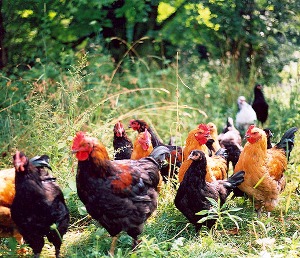Australia’s consumers: 0.6% agree with free-range egg industry standards

National consumer watchdog body Choice says 0.6% of its members agree with new voluntary egg industry standards which allow up to 20,000 birds a hectare on free-range farms, The Land reports.
Choice says it has no preferred figure for free-range stocking rates and has no animal welfare qualifications either, but only 0.6% of the 900 consumers it surveyed perceived 20,000/ha as being a realistic expectation of free-range farming.
However, more than two thirds of those surveyed had no idea what they considered a reasonable density.
The strongest support was just 16% of respondents giving the nod to a carrying capacity of 1500 birds/ha.
“Consumers are not necessarily talking about taste when buying eggs, they’re buying free-range based on their understanding of happy chooks back on the farm,” said Choice spokeswoman Ingrid Just.
“Without an accepted reasonable definition of what free-range means there is the opportunity for some producers to promote the term free-range as a marketing tool without meeting the hen density expectations of shoppers buying their produce.
Ms Just agreed however, it was hard for any shopper to imagine what 20,000 or 15,000 or 750 hens/ha really looked like or what was a reasonable animal welfare expectation.
The Australian Egg Corporation Ltd (AECL) has already given its seal of approval to free-range farms carrying 20,000/ha.
It insists that long-running qualitative research with free-range consumers, including focus groups, has supported expert welfare and food safety advice on the 20,000 cap.
Eggs from farms with 20,000 hens/ha or fewer which meet minimum housing and management standards will be able to carry the corporation’s trade mark tick of approval on free-range cartons.
But the corporation has drawn fierce condemnation from some free-range producers and other critics who argue the voluntary standard far exceeds the national model code of practice on free-range production based on stocking rates of 1500 hens/ha.
AECL claims the code is open ended and most free-range eggs are already sourced from farms carrying far more than 1500/ha.
It says the new 20,000 voluntary limit will provide a realistic maximum.
However according to Choice consumers, who are eating significantly more free-range eggs every year and paying premiums of AU$3 to AU$5 a dozen (€2.45 to €4.08 per dozen) more than cage eggs are confused by the different perspectives to the free-range issue.
Although its own survey found most consumers did not know what hen density was reasonable Ms Just said Choice felt the egg corporation’s certification would set a standard inconsistent with consumer expectations.
“What we need most is an industry standard that the whole industry works with and then we can use that as the basis for explaining to consumers what farm stocking densities really mean,” she said.
Choice (formerly the Australian Consumers Association) is also at odds with the NSW Food Authority which has just released approved definitions for free-range egg labelling.
It said the food authority’s response to consumer calls for transparent information on egg labelling and farming practices had only made the term “free-range” more confusing.
Ms Just said the authority’s definitions released on its website last week were flawed because they included producers certified under a range of voluntary codes as well as those who restricted numbers to 1500 birds/ha.
The food authority is standing by its interpretation of stocking densities and its information on egg labelling.
NSW Food Authority chief executive officer Polly Bennett said the free-range schemes assessed by the NSW Food Authority all used the model code definition as a foundation, and in some cases overlaid by additional criteria particular to that scheme.
It had analysed a number of widely available free-range schemes operating in NSW and found they complied with the requirements of the model code.
Source: The Land













